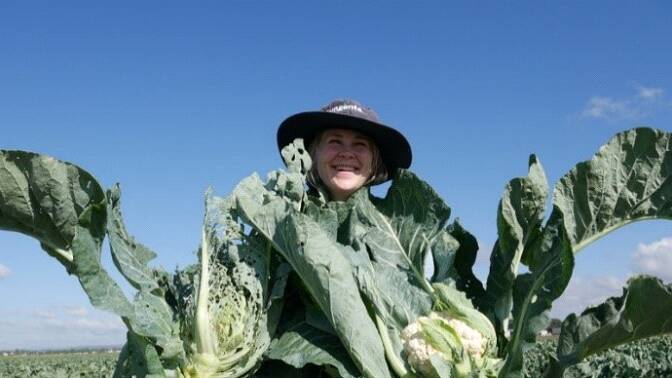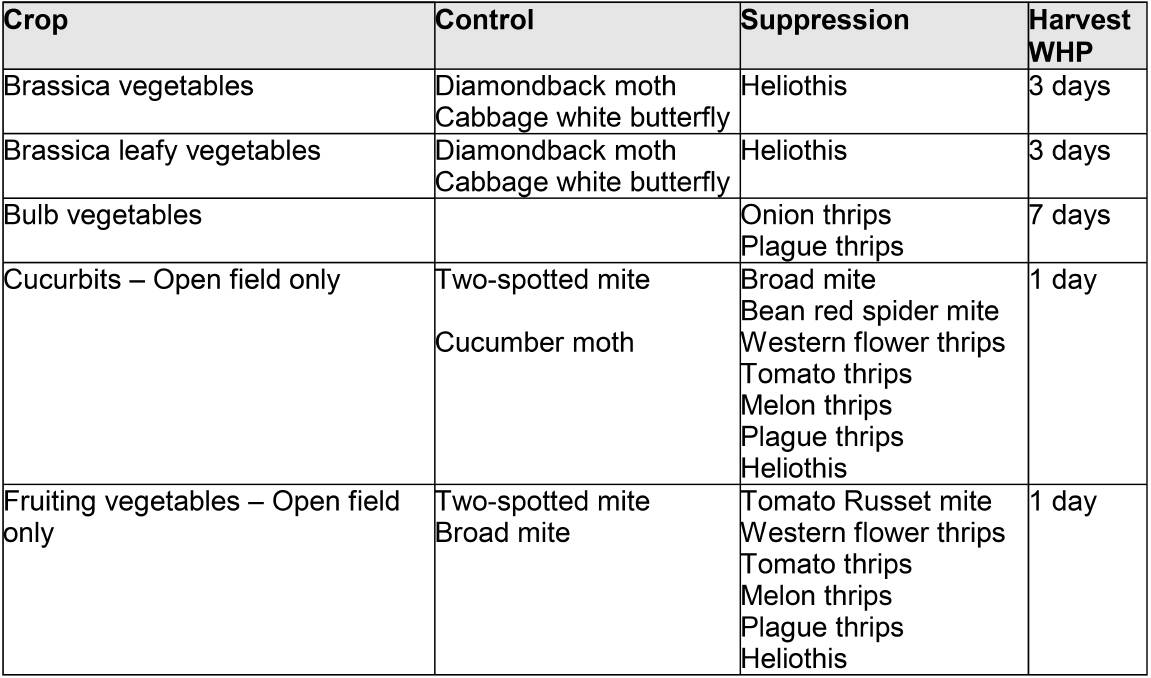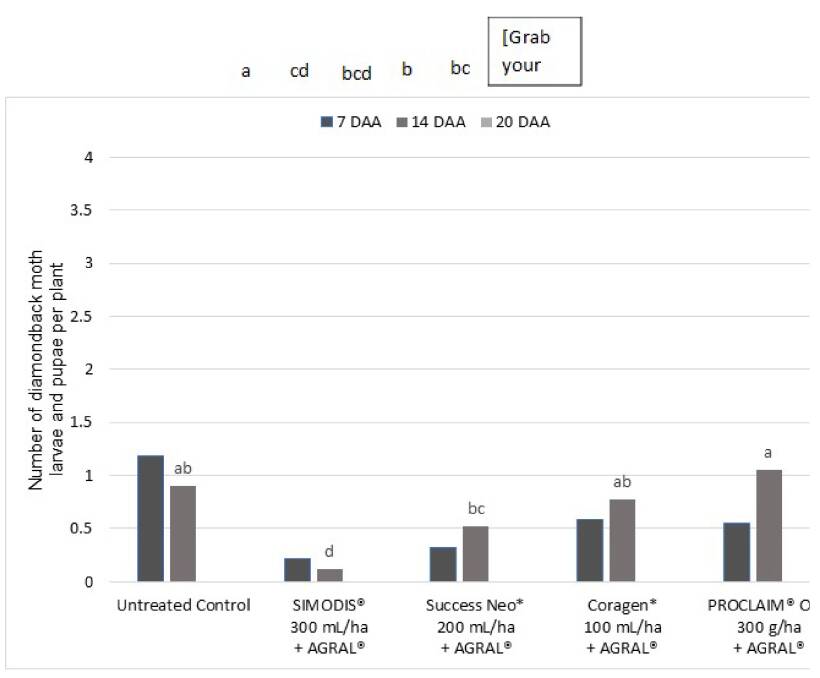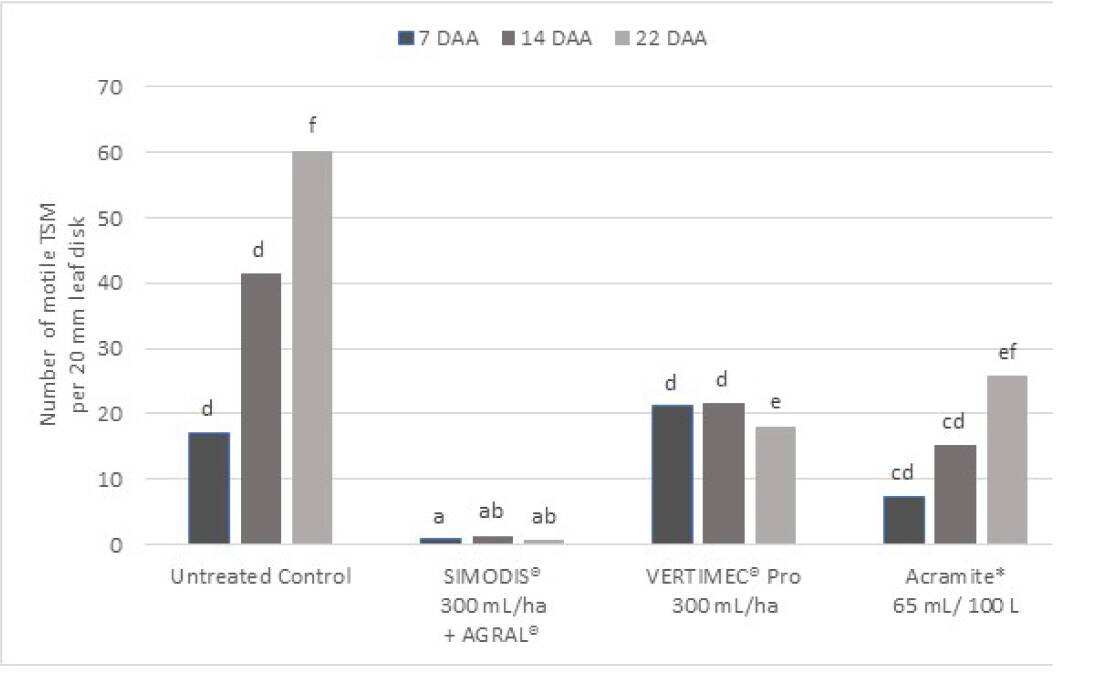Novel mode of action insecticide for tough vegetable crop pests

This is branded content for Syngenta Australia.
SIMODIS insecticide (Group 30) from Syngenta with PLINAZOLIN technology marks the next evolution in insecticide technology for protecting plant health.
"PLINAZOLIN technology is an innovation from Syngenta and is a novel mode of action that offers reliable, robust and extended efficacy against hard-to-control pests in our key horticultural crops," said Syngenta Technical Services lead, Dr Shaun Hood.
"We're anticipating registration of SIMODIS insecticide before the end of this year."
SIMODIS insecticide will help growers tackle resistant and traditionally hard-to-control pests, with the registration including diamondback moth, two-spotted mite and western flower thrips.
"We've put SIMODIS® through its paces using commercial application equipment on a range of crops across Australia," Dr Hood said.
"What impresses people is both its level of control and its residual activity."

Diamondback moth - redefining control
SEVEN days after the application (7 DAA), all insecticides effectively controlled the DBM population (Figure 1).
At 14 DAA, SIMODIS insecticide recorded significantly better DBM control than Success Neo (Group 5), Coragen (Group 28) and PROCLAIM Opti (Group 6).
The residual activity of SIMODIS insecticide was evident at this application timing when the vegetative growth had slowed.

By 20 DAA, larvae and pupae numbers increased nearly threefold in the untreated control, suggesting a recent egg lay had occurred.
SIMODIS was the only treatment that continued to control the DBM population at 20 DAA.
"This is a product that is going to redefine DBM control. It's a highly efficacious insecticide but it's also going to enable brassica growers to regain control of resistant populations," Dr Hood said.
"Monitoring is the key to effective DBM management. Apply SIMODIS insecticide as soon as the local thresholds are reached, either at egg hatch or very soon after egg hatch to target young larvae.
"Growers should avoid applying SIMODIS® to established populations dominated by large, later instar DBM larvae."
Two-spotted mites - resistance management resource
IN Bowen, Queensland in 2019, SIMODIS insecticide (plus AGRAL spray adjuvant) was applied on a cucumber crop and compared to industry standards for control of two-spotted mites (TSM).
In the untreated control, the TSM continued to increase throughout the trial, with more than 60 motiles per 20mm leaf disk recorded 22 days after application (Figure 2).
SIMODIS insecticide effectively reduced the density of eggs, nymphs and adult mites to very low levels. SIMODIS insecticide continued to record strong residual activity out to 22 DAA.
As a contact insecticide, residual activity of SIMODIS insecticide will be influenced by crop growth stage and spray coverage.

"SIMODIS insecticide is an exceptional miticide. With mites, monitoring is key to effective management. For best results, apply SIMODIS insecticide as soon as local thresholds are reached, targeting the mite population before it becomes established," Dr Hood said.
"Up to two applications of SIMODIS insecticide per crop will be permitted, but to manage resistance, growers will need to rotate to a miticide from a different mode of action group before applying a second SIMODIS insecticide application."

"These trials are a snapshot of what we've observed at numerous trial sites across Australia.
"SIMODIS insecticide has consistently delivered reliable and robust efficacy and exceptional crop safety against a range of pests and in a range of crops."
SIMODIS insecticide has excellent sunlight stability and rain-resistant properties, allowing for long spray intervals.
Syngenta will be showcasing SIMODIS insecticide in the field at the Syngenta GrowMore event, Gatton, November 2022.
This is branded content for Syngenta Australia.


